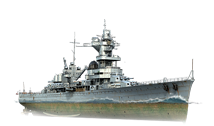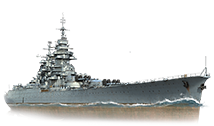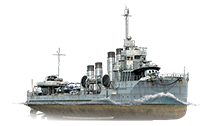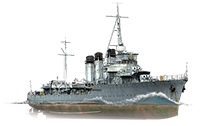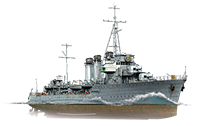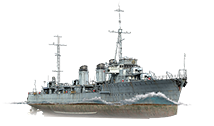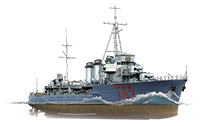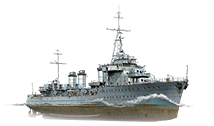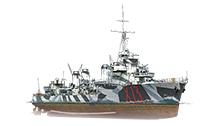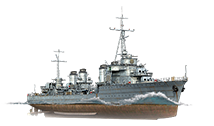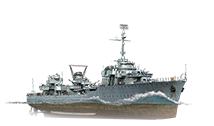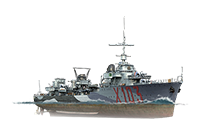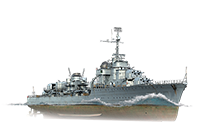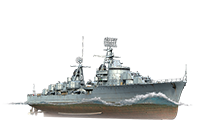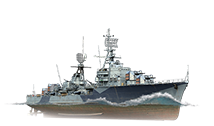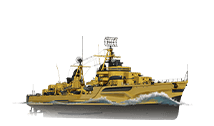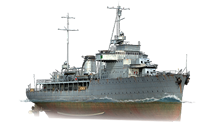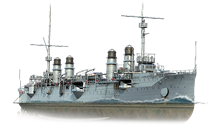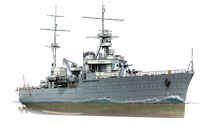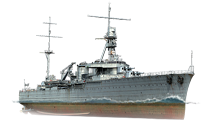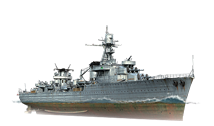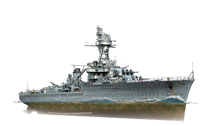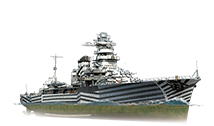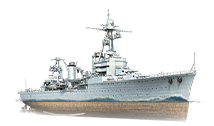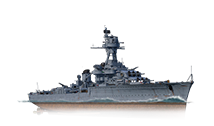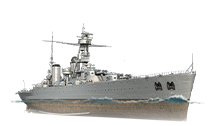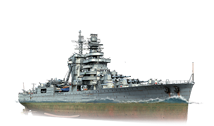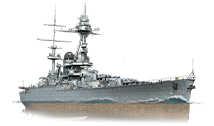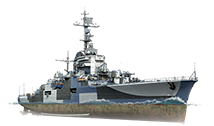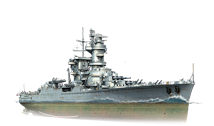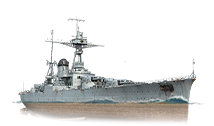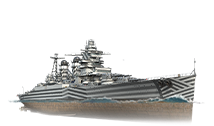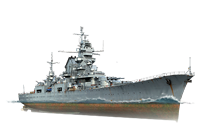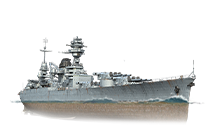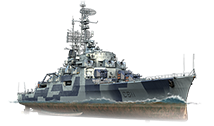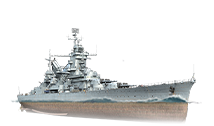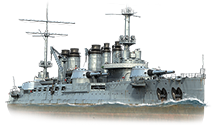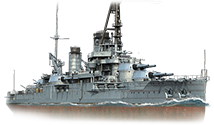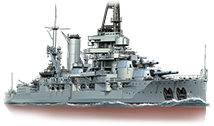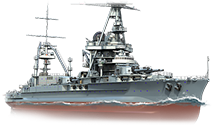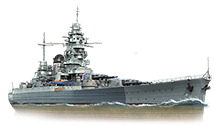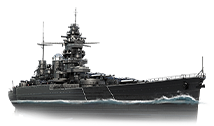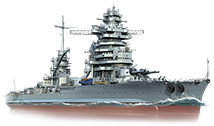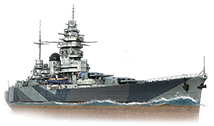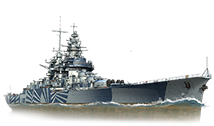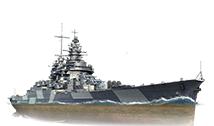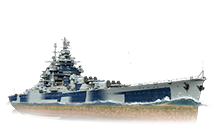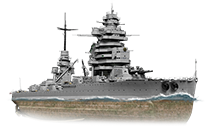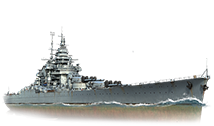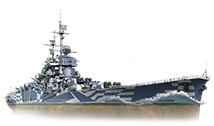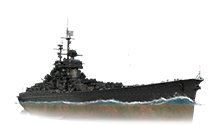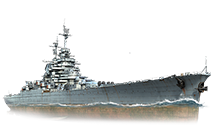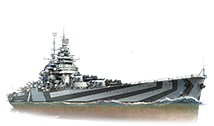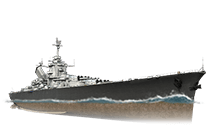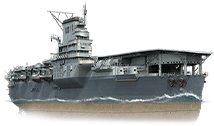Ships of France
| Revision as of 13:00, 18 November 2018 The original meaning used for "patrie" was "Fatherland", but the French Navy now officially uses "Homeland". | Revision as of 08:12, 18 July 2019 | |||
| Line 2: | Line 2: | |||
| |icon= | |icon= | |||
| |content= | |content= | |||
| ? | [[File:Wows flag France.png|frameless|left|link=]]'''"Honor, Homeland, Valor, Discipline."''' These are still the four tenets that define the ''Marine Nationale'' — or "La Royale" — as one of the world's oldest navies. The ''Marine Nationale'' was instrumental in establishing the French colonial empire and engaging in near-constant conflicts with their European neighbors, particularly the [[Ship:Ships_of_U.K.|Royal Navy]]. Despite constantly being dwarfed in overall size by their closest rival, the well-funded and well-equipped ''Marine Nationale'' still had an outsized influence on world events and naval strategy, being deeply involved in the [[Ship:Ships of U.S.A.|American]] Revolutionary War in the 18th century, the modernizing efforts of the [[Ship:Ships_of_Japan|Imperial Japanese Navy]] in the 19th century, negotiating the various post-World War I naval treaties early in the 20th century, and developing the ''Jeune École'' naval theory. Its engineers and shipbuilders were among the best in the world, building the ''Le Fantasque'' class of destroyers — the world's fastest to this day — and while the French paid little heed to naval aviation, their focus on battleships, especially fast battleships, produced the ''[[Dunkerque]]'' and ''Richelieu'' classes, regarded | + | [[File:Wows flag France.png|frameless|left|link=]]'''"Honor, Homeland, Valor, Discipline."''' These are still the four tenets that define the ''Marine Nationale'' — or "La Royale" — as one of the world's oldest navies. The ''Marine Nationale'' was instrumental in establishing the French colonial empire and engaging in near-constant conflicts with their European neighbors, particularly the [[Ship:Ships_of_U.K.|Royal Navy]]. Despite constantly being dwarfed in overall size by their closest rival, the well-funded and well-equipped ''Marine Nationale'' still had an outsized influence on world events and naval strategy, being deeply involved in the [[Ship:Ships of U.S.A.|American]] Revolutionary War in the 18th century, the modernizing efforts of the [[Ship:Ships_of_Japan|Imperial Japanese Navy]] in the 19th century, negotiating the various post-World War I naval treaties early in the 20th century, and developing the ''Jeune École'' naval theory. Its engineers and shipbuilders were among the best in the world, building the ''Le Fantasque'' class of destroyers — the world's fastest to this day — and while the French paid little heed to naval aviation, their focus on battleships, especially fast battleships, produced the ''[[Dunkerque]]'' and ''Richelieu'' classes, regarded as among the most successful designs built under the displacement limits of the Washington Naval Treaty. | |
| ? | Largely spared from the deep military budget cuts brought about by the Treaty of Versailles during the interwar period, the ''Marine Nationale'' took part in the Battle of the Atlantic, Operation Weserübung, and Operation Dynamo at the onset of the Second World War. However, the signing of the Armistice of 22 June 1940 with [[Ship:Ships_of_Germany|Germany]] meant that all operations with the Allies had to be suspended under the new Vichy France client state, with the exception of those who were able to join the Free French Naval Forces. While the terms of the Armistice meant that France was officially neutral, the British did not want to risk having the most powerful vessels of the ''Marine Nationale'' fall into enemy hands. | + | Largely spared from the deep military budget cuts brought about by the Treaty of Versailles during the interwar period, the ''Marine Nationale'' took part in the Battle of the Atlantic, Operation Weserübung, and Operation Dynamo at the onset of the Second World War. However, the signing of the Armistice of 22 June 1940 with [[Ship:Ships_of_Germany|Germany]] meant that all operations with the Allies had to be suspended under the new Vichy France client state, with the exception of those who were able to join the Free French Naval Forces. While the terms of the Armistice meant that France was officially neutral, the British did not want to risk having the most powerful vessels of the ''Marine Nationale'' fall into enemy hands. Thus, the Royal Navy was directed to execute Operation Catapult, an attack on the French naval forces docked at Mers-el-Kébir, Algeria, on 3 July 1940, greatly souring relations between the two powers for years to come. Nevertheless, rather than allow them to be captured by the Germans as part of Case Anton, French sailors scuttled the remainder of their fleet in Toulon on 27 November 1942, retaining their honor till the very end. | |
| ---- | ---- | |||
Revision as of 08:12, 18 July 2019

Largely spared from the deep military budget cuts brought about by the Treaty of Versailles during the interwar period, the Marine Nationale took part in the Battle of the Atlantic, Operation Weserübung, and Operation Dynamo at the onset of the Second World War. However, the signing of the Armistice of 22 June 1940 with Germany meant that all operations with the Allies had to be suspended under the new Vichy France client state, with the exception of those who were able to join the Free French Naval Forces. While the terms of the Armistice meant that France was officially neutral, the British did not want to risk having the most powerful vessels of the Marine Nationale fall into enemy hands. Thus, the Royal Navy was directed to execute Operation Catapult, an attack on the French naval forces docked at Mers-el-Kébir, Algeria, on 3 July 1940, greatly souring relations between the two powers for years to come. Nevertheless, rather than allow them to be captured by the Germans as part of Case Anton, French sailors scuttled the remainder of their fleet in Toulon on 27 November 1942, retaining their honor till the very end.
Cruisers
Playstyle
French cruisers are very fast, enabling them to fulfill a variety of roles. They are capable of being effective destroyer hunters and cruiser killers. These cruisers are excellent fire-starters, benefitting from a high fire chance. This can be used to great effect against battleships. However, it is important to be careful because with the exception of the Tier II ship, Jurien de la Gravière, French cruisers below Tier VII are not well-armored. At lower tiers, it is important to preserve health and avoid extended gunfights with other cruisers and battleships.
(link)
Developer diary for French cruisers.At Tier V, Émile Bertin has access to the Hydroacoustic Search ![]() consumable; torpedo range is also improved to 9 kilometers, which remains the same throughout subsequent tiers. At Tier VI, La Galissonnière and premium ship De Grasse are the first cruisers that have access to an upgraded version of the Engine Boost
consumable; torpedo range is also improved to 9 kilometers, which remains the same throughout subsequent tiers. At Tier VI, La Galissonnière and premium ship De Grasse are the first cruisers that have access to an upgraded version of the Engine Boost ![]() consumable. While active, the ship's speed is increased by 15-20%. All French cruisers that are Tier VI and above can mount the standard or premium version of this consumable. At Tier VI, these cruisers also gain access to the Defensive AA Fire
consumable. While active, the ship's speed is increased by 15-20%. All French cruisers that are Tier VI and above can mount the standard or premium version of this consumable. At Tier VI, these cruisers also gain access to the Defensive AA Fire ![]() consumable, which can be mounted by replacing Hydroacoustic Search. The anti-aircraft armaments of French cruisers are sub-optimal, so the use of Defensive AA Fire should be timed well to ensure that enemy aircraft squadrons cannot drop bombs and torpedoes accurately.
consumable, which can be mounted by replacing Hydroacoustic Search. The anti-aircraft armaments of French cruisers are sub-optimal, so the use of Defensive AA Fire should be timed well to ensure that enemy aircraft squadrons cannot drop bombs and torpedoes accurately.
Boasting up to 110 millimeters of armor at Tier VII, Algérie is the first of the French heavy cruisers. With the addition of armor, these higher tier French cruisers are able to take a hit; however, the armor should not be relied on. Proper positioning, evasive maneuvers, and use of cover are tactics that will ensure the survival of French cruisers throughout a match. At Tier X, players can look forward to Henri IV. This cruiser is a formidable opponent. With the Engine Boost consumable active, Henri IV can reach 43.9 knots, which is faster than most destroyers! Henri IV is a heavy hitter, sporting 240 millimeter main guns with a 12.3 second reload time. These guns have good shell arcs and velocities, allowing for long range accuracy up to the maximum range of 19.08 kilometers. If needed, Henri IV is capable of restoring health with access to the Repair Party ![]() consumable.
consumable.
Battleships
Playstyle
Added in Update 0.7.2, French battleships start at low tier with traditional dreadnought-style designs, but shift to designs more akin to battlecruisers at higher tiers. They are very fast for their size, and from Tier VIII onward they get access to the Engine Boost ![]() consumable, further adding to their speed. Starting from Tier VI, they typically arrange their main battery guns in quadruple turrets, giving them a large volume of fire that is quite accurate and has good characteristics, though the guns themselves tend to be smaller in caliber. Their secondary guns are nothing to sneeze at either, matching or even exceeding the secondaries of those found on Japanese battleships (though still inferior to those of the Germans) and their anti-air capabilities are above-par once you get to Tier VII (though they have weak anti-air prior to that point). Unfortunately, French battleships also stick out like a sore thumb, having absolutely horrid detection values that let enemies see them coming for miles. They also tend to have sub-par armor when compared to the battleships of other nations, making it easy for their counterparts to land full damage penetrations or citadel hits. Additionally, their anti-aircraft and secondary batteries tend to be quite fragile; sustained enemy fire from high explosive shells can quickly wreck their defenses.
consumable, further adding to their speed. Starting from Tier VI, they typically arrange their main battery guns in quadruple turrets, giving them a large volume of fire that is quite accurate and has good characteristics, though the guns themselves tend to be smaller in caliber. Their secondary guns are nothing to sneeze at either, matching or even exceeding the secondaries of those found on Japanese battleships (though still inferior to those of the Germans) and their anti-air capabilities are above-par once you get to Tier VII (though they have weak anti-air prior to that point). Unfortunately, French battleships also stick out like a sore thumb, having absolutely horrid detection values that let enemies see them coming for miles. They also tend to have sub-par armor when compared to the battleships of other nations, making it easy for their counterparts to land full damage penetrations or citadel hits. Additionally, their anti-aircraft and secondary batteries tend to be quite fragile; sustained enemy fire from high explosive shells can quickly wreck their defenses.
